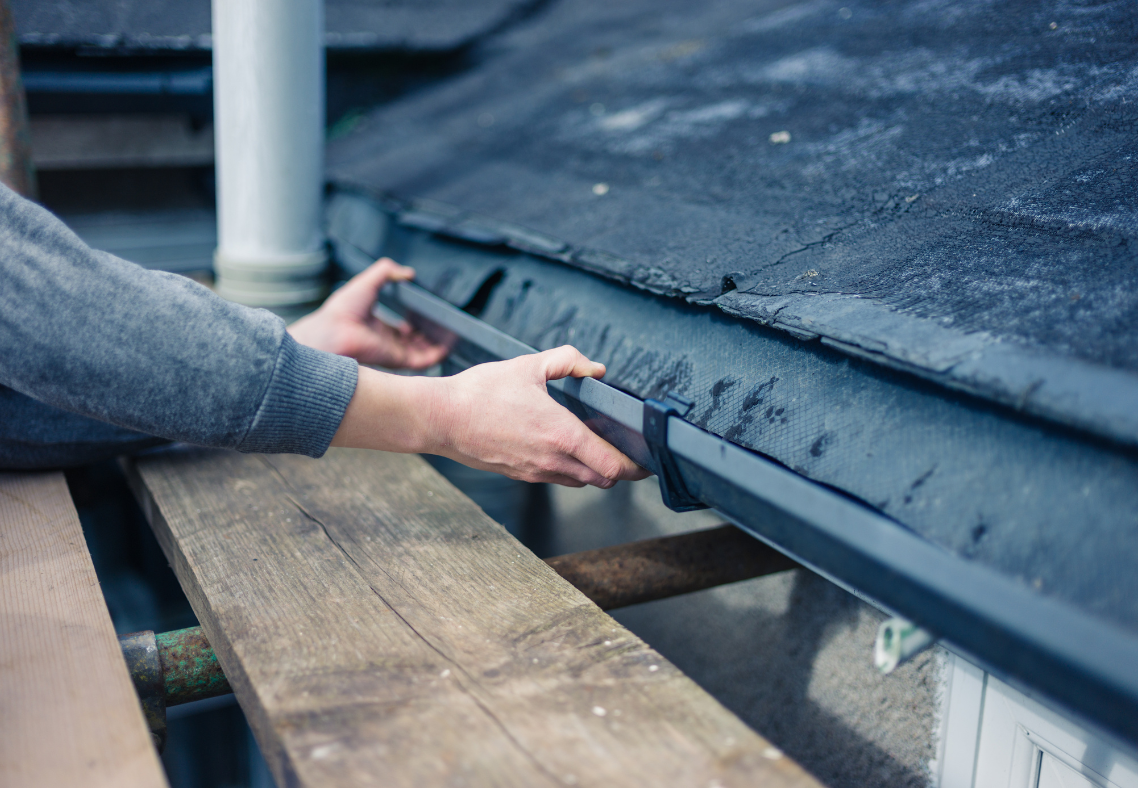Homeowners often face the challenge of maintaining their homes, and one common issue is dealing with sagging gutters. This seemingly small problem can lead to significant damage if not addressed promptly. Fortunately, fixing sagging gutters is a task that most homeowners can handle with a little guidance and the right tools. In this article, we’ll explore the steps you can take to repair and maintain your gutters, ensuring they function properly and protect your home from water damage.

Understanding the Importance of Gutters
Before diving into how to fix sagging gutters, it’s essential to understand why gutters are crucial. Gutters play a vital role in diverting rainwater away from your home’s foundation, walls, and roof. Properly functioning gutters prevent water from seeping into the structure, reducing the risk of water damage, mold growth, and other related issues. Regular maintenance, including fixing sagging gutters, is key to ensuring they perform their job effectively.
Identifying the Causes of Sagging Gutters
To effectively address sagging gutters, it’s important to identify the underlying causes. Several factors can contribute to this issue, including:
1. Clogged Gutters
Debris such as leaves, twigs, and dirt can accumulate in gutters, causing blockages. This added weight can lead to sagging over time. Regular cleaning is essential to prevent this problem. For more on maintaining your roof drainage system, visit this Roof Drainage Maintenance Checklist.
2. Improper Installation
Gutters that were not installed correctly may lack the necessary support and pitch, causing them to sag. Ensuring proper installation from the start can prevent future issues.
3. Weak or Damaged Hangers
Gutter hangers that are weak, damaged, or spaced too far apart can fail to hold the gutter in place. Inspecting and replacing hangers is a critical step in fixing sagging gutters.
4. Weather-Related Damage
Severe weather conditions, such as heavy rain or snow, can exert pressure on gutters, leading to sagging. Regular inspections after storms are advisable to catch any potential problems early.
Tools and Materials You’ll Need
Before you start fixing your sagging gutters, gather the necessary tools and materials:
- Ladder
- Gloves
- Screwdriver or drill
- Replacement gutter hangers
- Level
- Caulking gun and sealant
Step-by-Step Guide to Fixing Sagging Gutters
1. Safety First
Always prioritize safety when working on a ladder. Ensure it’s stable and positioned on a flat surface. If possible, have someone assist you by holding the ladder steady.
2. Clean the Gutters
Begin by cleaning out any debris in the gutters. Use gloves to remove leaves, twigs, and dirt. A clean gutter ensures that you can accurately assess the sagging issue.
3. Inspect Gutter Hangers
Examine the condition of the gutter hangers. If they’re bent, damaged, or spaced too far apart, they need replacement. Properly spaced hangers provide the necessary support to prevent sagging.
4. Install New Hangers
Using a screwdriver or drill, install new hangers as needed. Ensure they’re evenly spaced and securely fastened to the fascia board. This step is crucial for stabilizing the gutter.
5. Check the Gutter Pitch
Using a level, check the pitch of the gutters. They should slope toward the downspout to facilitate proper water flow. Adjust the hangers if necessary to achieve the correct pitch.
6. Seal Any Leaks
Inspect the gutters for any leaks or gaps. Use a caulking gun and sealant to seal these areas and prevent water from escaping.
Preventing Future Gutter Issues
Once you’ve fixed your sagging gutters, it’s important to take steps to prevent future problems:
1. Regular Maintenance
Schedule routine gutter cleaning to remove debris and prevent clogs. Regular inspections can catch potential issues before they become major problems.
2. Install Gutter Guards
Consider installing gutter guards to reduce the accumulation of debris. These guards can significantly decrease the frequency of gutter cleaning.
3. Monitor Weather Conditions
Keep an eye on weather forecasts and inspect your gutters after severe weather events. This proactive approach can help you identify and address any damage promptly.
When to Seek Professional Help
While many homeowners can tackle sagging gutter repairs, there are situations where professional help is advisable. If you’re uncomfortable working on a ladder or if the damage is extensive, it’s best to consult a professional. They can ensure the job is done safely and effectively.
For more detailed guidance on roof drainage systems, visit this blog.
Conclusion
Maintaining your home’s gutters is an essential aspect of homeownership. By addressing sagging gutters promptly and implementing preventive measures, you can protect your home from water damage and ensure the longevity of your gutter system. With the right tools, knowledge, and effort, fixing sagging gutters is a manageable task that can save you from costly repairs in the future.

FAQ Section
1. How often should I clean my gutters?
It’s recommended to clean your gutters at least twice a year, ideally in the spring and fall. However, if you have overhanging trees, more frequent cleaning may be necessary.
2. Can I install gutter guards myself?
Yes, many gutter guards are designed for DIY installation. However, if you’re unsure or uncomfortable, hiring a professional is a good option.
3. What are the signs that my gutters need repair?
Signs that your gutters need repair include visible sagging, water overflow during rain, and the presence of rust or cracks.
This article contains affiliate links. We may earn a commission at no extra cost to you.







